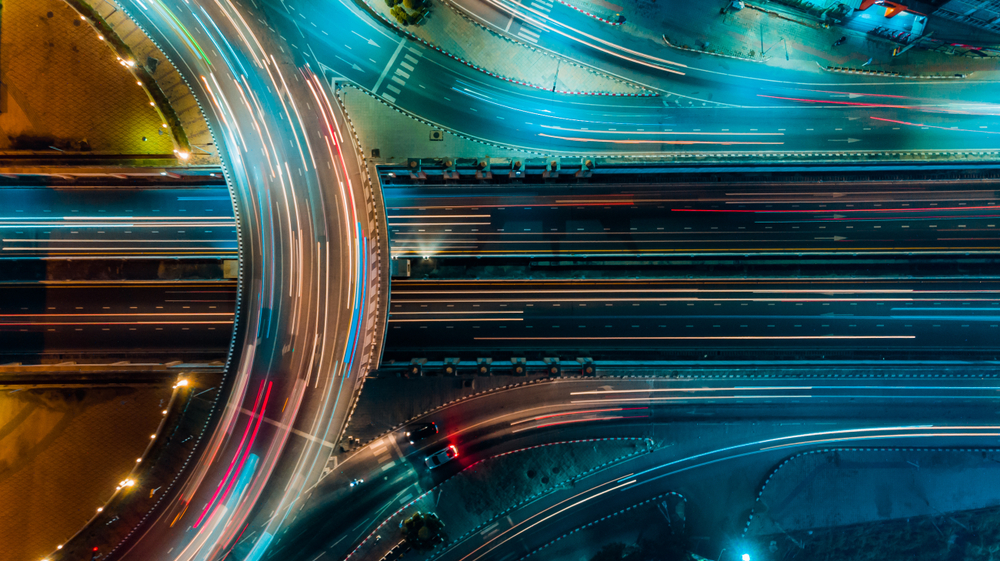How Automotive Iot Can Take You on a Cleaner Ride

The automotive Internet of Things (IoT) is coming to a road near you. Are you ready for a cleaner, greener drive?
From healthcare and education to smart buildings and agriculture tech, we’ve seen how IoT revolutionizes how we work, learn, and live. IoT devices made up of sensors, software, and cameras transmit and exchange data with other devices and systems connected to the Internet. This data—captured, stored, and analyzed in real-time—is a goldmine of actionable insights from assets, systems, and processes.
(Also read: IoT and Our New Normal)
In this article, learn how automotive IoT can help us travel around a cleaner and greener planet—for employees driving to work, commuters on public transport, and logistics drivers moving goods from one location to another.
Connected vehicles
The transportation sector is responsible for ⅕ of the world’s carbon dioxide emissions, with road vehicles accounting for 74.5% of global transportation emissions.
C-V2X (cellular vehicle-to-everything) solutions can help reduce these emissions. Linked to other vehicles, infrastructure, and pedestrians, connected vehicles can make daily travel safer and more efficient. With IoT technology, connected vehicles can share information about their route, speed, and location to help prevent accidents and collisions. Connected vehicles also help emergency vehicles move faster through traffic.
Connected to infrastructure such as toll booths, lane markings, railroad crossings, and traffic lights, a vehicle-to-infrastructure (V2I) system enables smoother traffic flow and gives drivers up-to-date warnings of existing and approaching queues.
Through augmented sensors and communication systems, vehicle-to-pedestrian (V2P) connections can detect and alert drivers to at-risk pedestrians or cyclists. Researchers at the FHWA Turner-Fairbank Highway Research Center (TFHRC) in the United States recently tested commercially available V2P technologies to evaluate their strengths, weaknesses, and potential for improving pedestrian safety.
According to global management consulting firm McKinsey, around 95% of new vehicles sold globally will be connected by 2030, up from about 50% today. The rise of C-V2X technology could pave the way to a new era of smart transportation that enhances road safety and nurtures a cleaner environment.
(Also read: The Road Ahead: Connected Vehicles)
Public transportation
More than 4.3 billion people or 55% of today’s global population live in cities. By 2050, that number is projected to rise to 80%. For many urban dwellers, public transportation is an affordable and environmentally-friendly option, considering that taking public transportation instead of driving alone can reduce CO2 emissions by 45%. But it’s not always a fast and convenient one.
In cities around the world, IoT in public transportation is making everyday commutes more comfortable and easier to plan. Real-time tracking greatly improves the commuter’s overall experience, as sensors installed on buses, trains, and ferries can give customers accurate arrival times and alert them to any delays caused by accidents, scheduling changes, or other mishaps.
IoT also helps public transport system operators minimize operational costs through preventive and predictive maintenance. With constant monitoring and analysis of various parts and systems such as tire pressure, engine temperature, fuel and battery levels, and other factors, the breakdown of vehicles or stoppage of service can be better avoided.
Big data helps improve efficiency. By analyzing passenger data, transportation authorities can determine how many passengers need to be picked up at a particular stop or station and direct the appropriate number of vehicles or trains to those routes. The wealth of information gathered by IoT can also help authorities plan new bus and train services and provide valuable insights for city planning and management.
(Also read: 6 Tips for a Smaller Transportation Footprint)
If your business relies on vehicles, the management, coordination, and monitoring of your fleet are crucial to your company’s success. By collecting, storing, and analyzing data from IoT sensors in real-time, fleet managers can evaluate and improve vehicle maintenance and performance, driver operation, cargo management, and route optimization.
Fleet management uses several technologies to capture data for actionable insights. The software collects information about the fleet, providing a database that tracks important data such as fuel consumption, driver behavior, customer updates, and dispatching drivers. Using GPS tracking, fleet managers can monitor assets such as workers, equipment, vehicles, and cargo in real-time, allowing managers to know a vehicle’s location and the estimated time of arrival, and which vehicles they should dispatch next. With maintenance software, fleet operators can track engine hours, fuel consumption, and mileage and get alerts for when a vehicle needs servicing or repairs. IoT security solutions such as driver identification, encryption policies, and identity and access management provide greater security and safety. With IoT, fleet managers are alerted to dangerous driving patterns and possible accidents, and can intervene if necessary.
With IoT-based fleet management, operators have a bigger and more detailed view of their entire fleet. This improved visibility enables better monitoring and maintenance, enhanced asset security, and optimized operations. All of these benefits yield increased savings and reduced maintenance and repair costs.
Connections for a greener future
For every journey taken and every parcel shipped, automotive IoT can help alleviate the problems of urbanization, reduce carbon dioxide emissions and fuel consumption, and enhance the safety of passengers, drivers, and pedestrians. Automotive IoT is definitely a ride worth taking.
As one of the Top 25 EMS companies in the world, IMI has over 40 years of experience in providing electronics manufacturing and technology solutions.
We are ready to support your business on a global scale.
Our proven technical expertise, worldwide reach, and vast experience in high-growth and emerging markets make us the ideal global manufacturing solutions partner.
Let's work together to build our future today.
Other Blog


